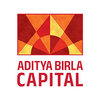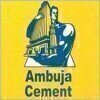Mining Engineer
60+ Mining Engineer Interview Questions and Answers
Asked in Jd Construction

Q. Bench height of mines? Safety features of loader?
Bench height refers to the vertical distance between each level in a mine. Loader safety features include seat belts, backup alarms, and emergency stop buttons.
Bench height is determined based on the type of mining operation and equipment used.
It affects the efficiency of mining operations and the stability of the mine walls.
In open-pit mining, bench height is typically larger to accommodate larger equipment and improve productivity.
In underground mining, bench height is smal...read more

Asked in Amazon

Q. What is the capital of India?
The capital of India is New Delhi.
The capital city of India is New Delhi.
New Delhi is located in the northern part of India.
It is the seat of the Indian government and houses important political and administrative institutions.
New Delhi is known for its rich history, diverse culture, and iconic landmarks like the Red Fort and India Gate.
Asked in WACEM

Q. What is the definition of an explosive?
An explosive is a substance that undergoes rapid chemical reaction, producing gas and heat, often resulting in an explosion.
Explosives can be classified into two main categories: primary and secondary explosives.
Primary explosives are sensitive to heat, shock, or friction (e.g., lead azide).
Secondary explosives are more stable and require a detonator to explode (e.g., TNT, ANFO).
Explosives are used in mining, construction, and demolition to break rock or structures.
Safety mea...read more

Asked in Tata Steel

Q. What is the difference between space and burden in blasting?
Space is the distance between blastholes, while burden is the distance from the blasthole to the free face of the rock.
Space is the distance between blastholes in a blast pattern.
Burden is the distance from the blasthole to the free face of the rock.
Space affects the fragmentation and distribution of the blasted material.
Burden influences the amount of energy transferred to the rock mass.
Optimal space and burden ratios are crucial for efficient blasting operations.
Asked in WACEM

Q. What is the process of mine drilling?
Mine drilling involves creating holes in the earth to extract minerals, using various techniques and equipment.
1. Site Preparation: Clearing the area and ensuring safety protocols are in place.
2. Drilling Techniques: Using rotary, percussion, or diamond drilling methods based on rock type.
3. Equipment: Employing drills like DTH (Down The Hole) or rotary drills for efficiency.
4. Hole Design: Planning hole depth and diameter to optimize mineral extraction.
5. Sampling: Collectin...read more
Asked in WACEM

Q. What is the process of surveying mines?
Surveying mines involves measuring and mapping underground and surface features for planning and operational purposes.
1. Preliminary Surveys: Initial surveys to assess the site and gather geological data.
2. Topographic Surveys: Mapping the surface features and contours of the mining area.
3. Underground Surveys: Using specialized equipment to measure and map underground workings.
4. GPS and GIS Technology: Utilizing Global Positioning Systems and Geographic Information Systems ...read more
Mining Engineer Jobs




Asked in Zuari Cement

Q. What is blasting exposure?
Blasting exposure refers to the risk of harm to people and the environment from the use of explosives in mining operations.
Blasting exposure can cause physical harm to workers, such as hearing loss, lung damage, and injuries from flying debris.
It can also have environmental impacts, such as air and water pollution, and damage to wildlife habitats.
To minimize blasting exposure, mining companies must follow strict safety protocols and use advanced technology to monitor and cont...read more

Asked in MagicBricks

Q. Where do you see yourself in 10 years?
In 10 years, I envision myself as a senior mining engineer, leading innovative projects and mentoring the next generation of engineers.
Leading a team of engineers on large-scale mining projects, such as developing sustainable mining practices.
Contributing to advancements in mining technology, like automation and data analytics for improved efficiency.
Mentoring junior engineers and interns, sharing knowledge and fostering a collaborative work environment.
Engaging with industry...read more
Share interview questions and help millions of jobseekers 🌟


Asked in Essel Mining & Industries

Q. What is the full form of HEMM (Heavy Earth Moving Machine)?
HEMM stands for Heavy Earth Moving Machinery.
HEMM refers to large machines used in mining and construction for moving earth and other materials.
Examples of HEMM include dump trucks, excavators, bulldozers, and wheel loaders.

Asked in Jms Mining Services

Q. What are the safety considerations in underground mines?
Safety in underground mines involves measures to protect workers from hazards and ensure a secure working environment.
Regular safety training for all personnel to recognize and respond to hazards.
Use of personal protective equipment (PPE) like helmets, gloves, and respirators.
Implementation of ventilation systems to control air quality and prevent gas accumulation.
Routine inspections and maintenance of equipment to prevent malfunctions.
Emergency response plans, including evac...read more

Asked in Eastern Coalfields

Q. What is the board and pillar method?
The board and pillar method is an underground mining technique that uses pillars to support the roof while extracting minerals.
Commonly used in coal mining and some metal mines.
Involves creating a grid of 'boards' (extracted areas) and 'pillars' (support structures).
Pillars are left in place to support the mine roof and prevent collapse.
Allows for selective mining and can be adapted to various geological conditions.
Example: In coal mining, the pillars can be left to support t...read more
Asked in HINDCO CONSULTING SERVICES

Q. What is void? Explain it.
VOD stands for Vertical Opening Distance, which is a measurement used in mining engineering.
VOD is the vertical distance between two levels in a mine.
It is an important factor in determining the efficiency of ventilation systems in underground mines.
VOD can impact the safety and productivity of mining operations.
Example: A mining engineer must calculate the VOD to ensure proper airflow and ventilation in the mine.
Example: Increasing the VOD can help improve air quality and re...read more
Asked in Ka India

Q. Blasting hole length explosive uses
Blasting hole length and explosive use are crucial factors in mining engineering for efficient rock fragmentation.
Blasting hole length should be optimized based on rock type, size, and desired fragmentation.
Explosive type and amount should be carefully selected to achieve desired results.
Proper stemming and initiation sequence are important for effective blasting.
Examples: Using ANFO for soft rock and emulsion explosives for hard rock.
Optimizing blast design can improve fragm...read more
Asked in HINDCO CONSULTING SERVICES

Q. What is solid blasting?
Solid blasting is a method used in mining to break up solid rock using explosives.
Solid blasting involves drilling holes into the rock, filling them with explosives, and detonating them to break up the rock.
It is commonly used in mining operations to extract minerals and ores from the earth.
The size and placement of the blast holes, as well as the type and amount of explosives used, are carefully calculated to ensure safe and efficient blasting.
Solid blasting can create large...read more

Asked in Maheshwari Mining

Q. Mine operation of UG mine coal.
UG mine coal refers to underground coal mining operations.
UG mine coal refers to the extraction of coal from underground mines using various methods such as longwall mining, room and pillar mining, etc.
Safety is a major concern in UG mine coal operations due to the potential risks of roof collapses, gas explosions, and other hazards.
Ventilation systems are crucial in UG mine coal operations to ensure proper airflow and control of methane gas.
Equipment used in UG mine coal ope...read more

Asked in Naaraayani Sons

Q. What is secondary blasting?
Secondary blasting is a method used in mining to break up large rocks after the initial blast.
Secondary blasting is done to further break down large rocks into smaller, more manageable pieces.
It is typically done after the initial blast to maximize the efficiency of the mining operation.
Secondary blasting can be done using explosives or mechanical methods such as hydraulic breakers.
The goal of secondary blasting is to make the rock fragments easier to handle and transport.

Asked in Cohance Lifesciences

Q. How is owner of company
The owner of the company is responsible for overseeing the operations, making strategic decisions, and ensuring the company's success.
The owner is typically the individual or group of individuals who have invested capital into the company.
Owners have the ultimate decision-making authority and are responsible for setting the company's goals and direction.
Owners may also be involved in hiring key personnel, managing finances, and representing the company to stakeholders.
Example...read more

Asked in Cohance Lifesciences

Q. Who are the workers in the company?
A worker in a mining company is an individual engaged in various tasks related to mineral extraction and processing.
Roles include miners, engineers, and safety officers.
Miners operate machinery and extract minerals from the earth.
Engineers design mining plans and ensure safety protocols.
Safety officers monitor compliance with health and safety regulations.
Asked in Ka India

Q. Digging height of excavator
The digging height of an excavator refers to the maximum vertical distance from the ground level to which the excavator's bucket can reach.
Digging height is an important factor to consider when selecting an excavator for a mining operation.
It determines the depth of the excavation that can be achieved without repositioning the machine.
Factors affecting digging height include the length of the excavator's boom and the reach of the bucket.
For example, a large excavator with a l...read more

Asked in UltraTech Cement

Q. What is mining?
Mining is the process of extracting valuable minerals or other geological materials from the earth.
Mining involves digging, drilling, and blasting to access ores or minerals.
It can be done underground or in open pits.
Various methods are used such as surface mining, underground mining, and placer mining.
Examples include coal mining, gold mining, and diamond mining.
Asked in Ka India

Q. Bench height of minerals
Bench height of minerals refers to the vertical distance between each level in an open pit mine.
Bench height is determined based on the type of mineral being mined and the equipment used for extraction.
It is important to consider safety regulations and stability of the pit walls when determining bench height.
Common bench heights range from 10 to 20 meters, but can vary depending on specific mining conditions.
For example, softer minerals may require smaller bench heights to pr...read more
Asked in Ka India

Q. Inclination of haul road
The inclination of a haul road refers to the slope or gradient of the road surface.
The inclination of a haul road is important for ensuring safe and efficient transportation of materials.
Steep inclinations can lead to increased fuel consumption and wear and tear on vehicles.
Proper drainage is essential to prevent erosion and maintain road stability.
Inclination angles are typically measured in degrees or as a percentage of rise over run.
For example, a 10% inclination means the...read more

Asked in Jindal Steel and Power

Q. what is types of coal
Types of coal include anthracite, bituminous, subbituminous, and lignite.
Anthracite is the highest rank of coal and is hard, black, and has a high carbon content.
Bituminous coal is the most commonly used type and is dense and black with a moisture content of less than 20%.
Subbituminous coal is dull black and has a higher moisture content than bituminous coal.
Lignite is the lowest rank of coal and is brownish-black with a high moisture content.

Asked in Midwest Granite Pvt.Ltd

Q. What are drilling and blasting?
Drilling and blasting are techniques used in mining to break rock for extraction and excavation purposes.
Drilling involves creating holes in rock to insert explosives.
Blasting uses explosives to fracture rock, making it easier to transport.
Common explosives include ANFO (Ammonium Nitrate Fuel Oil) and emulsions.
Controlled blasting minimizes environmental impact and vibration.
Used in various mining operations, including surface and underground mining.

Asked in Jms Mining Services

Q. What is the longwall mining method?
The longwall method is an underground mining technique for extracting coal in a controlled manner using a long wall face.
Utilizes a long wall of coal that is mined in a single slice.
Supports the roof with hydraulic jacks to prevent collapse.
Commonly used in steeply dipping coal seams.
Example: The longwall method is widely used in Australia and the USA.
Allows for high recovery rates, often exceeding 80%.

Asked in Jms Mining Services

Q. What is underground mining?
Underground mining is the extraction of minerals and resources from beneath the Earth's surface using various techniques.
Involves creating tunnels or shafts to access mineral deposits.
Commonly used for extracting metals like gold, silver, and copper.
Techniques include room and pillar, cut and fill, and longwall mining.
Safety measures are critical due to risks like cave-ins and gas exposure.
Examples include the deep mines in South Africa and the coal mines in Appalachia.

Asked in Aditya Birla Capital

Q. What is roof support?
Roof support refers to the methods and materials used to prevent the collapse of the roof in underground mining operations.
Roof support is essential for maintaining the stability and safety of underground mines.
Common methods of roof support include roof bolts, mesh, straps, and wooden or steel beams.
The choice of roof support method depends on the geology of the mine, the depth of the excavation, and the type of rock being mined.
Roof support systems must be regularly inspect...read more
Asked in Jd Construction

Q. What are the safety features of a tipper truck?
Safety features of a tipper include hydraulic brakes, rearview cameras, and emergency stop buttons.
Hydraulic brakes provide better control and stopping power.
Rearview cameras help the driver see blind spots and obstacles.
Emergency stop buttons allow immediate halting of operations in case of emergencies.

Asked in Essel Mining & Industries

Q. What is a mineral?
A naturally occurring inorganic solid substance with a specific chemical composition and structure.
Naturally occurring
Inorganic
Solid substance
Specific chemical composition and structure

Asked in Jindal Power

Q. Water management in opencast
Water management in opencast mining involves controlling water flow, preventing pollution, and ensuring proper drainage.
Implementing proper drainage systems to prevent water accumulation in the mining area
Using sedimentation ponds to treat water before releasing it back into the environment
Regular monitoring of water quality to ensure compliance with regulations
Implementing erosion control measures to prevent soil and water pollution
Utilizing water recycling and reuse techniq...read more
Interview Questions of Similar Designations
Interview Experiences of Popular Companies









Reviews
Interviews
Salaries
Users


















